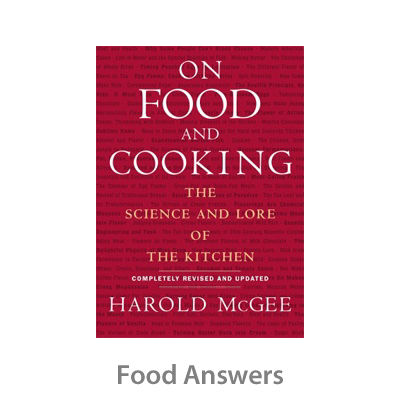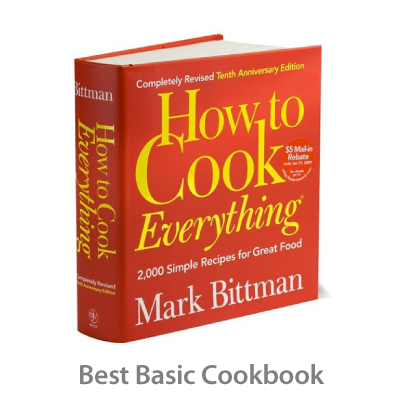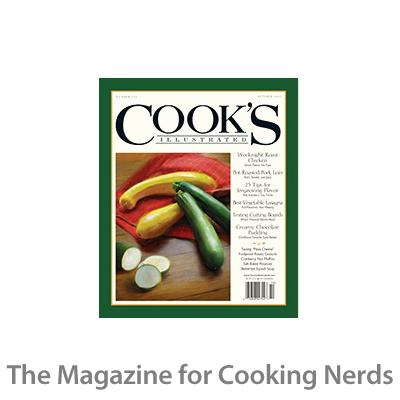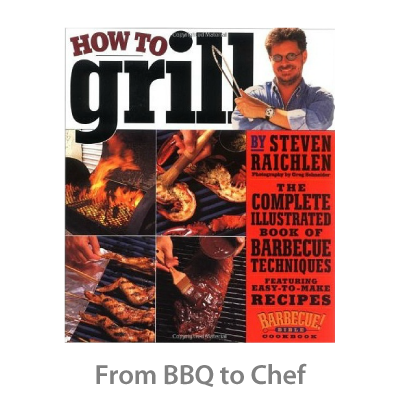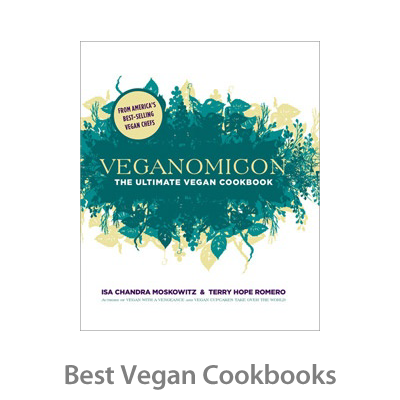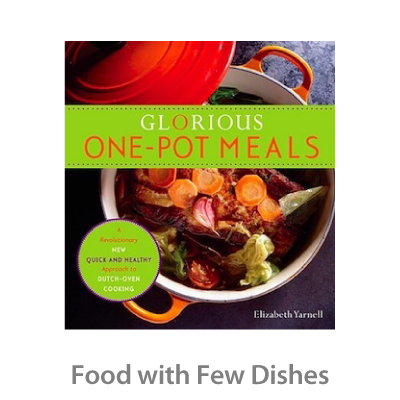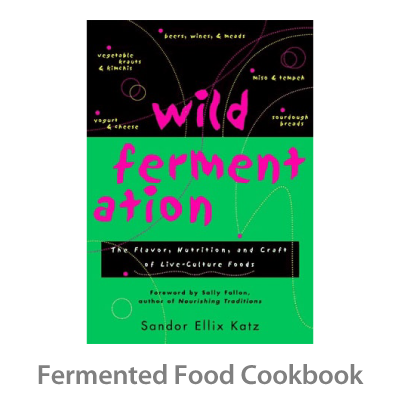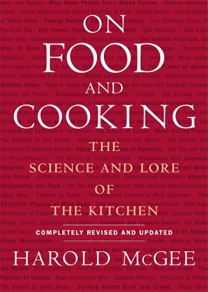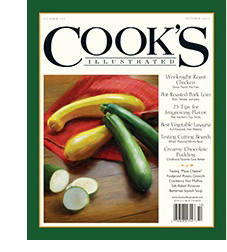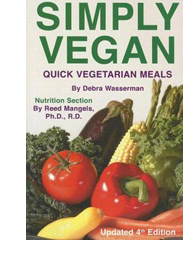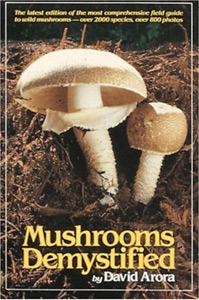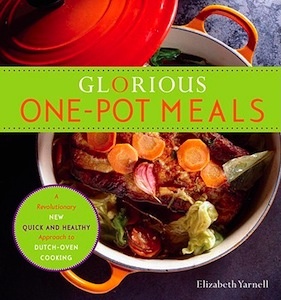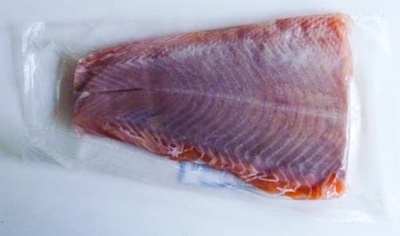This is the smartest book in my kitchen. It’s where I go whenever I have a question about what I am eating, or the science behind its preparation. Simply the best source for understanding food and how it works. Now in its updated second edition. Covers ingredients from all over the world and time. Awesome, encyclopedic.
- McGee, Harold. 2004. On Food and Cooking: The Science and Lore of the Kitchen. New York: Scribner.
- 884 pages
- $26
- Available from Amazon
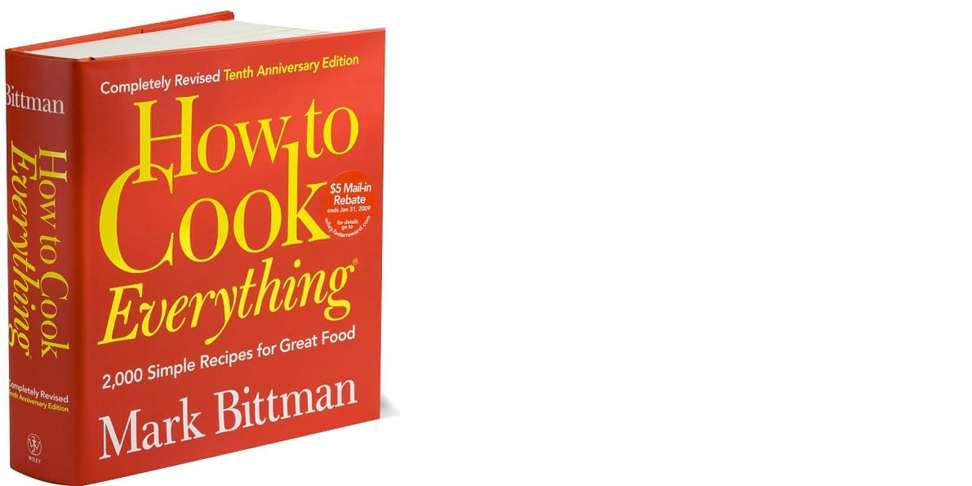
In our household, this is the book that has replaced Joy of Cooking as the first cookbook we reach for. It educates the ignorant, rewards the expert, and gratifies the harried with steady and sure knowledge about how to cook everything. By everything it means: wholesome everyday food. Its 2,000 recipes are unpretentious, yet diverse.
- Bittman, Mark. 2008. How to Cook Everything: 2,000 Simple Recipes for Great Food. (10th Anniversary Ed.) Hoboken, NJ: John Wiley & Sons, Inc.
- 1056 pages
- $18
- Available from Amazon
Each year, I experiment less and less with complex dishes, and try to master the simple staples both of our widely divergent culture, and of other cultures from around the world. I look for good ingredients, and handle them minimally. I am usually satisfied with the food I prepare, but I am the first to admit that it is very rarely on the same level as that served in the world’s best restaurants. (It’s better, however, than that served in the vast majority of restaurants.)
Striving for brilliance in everyday cooking is a recipe for frustration. Rather, everyday cooking is about preparing good, wholesome, tasty, varied meals for the ones you love. This is a simple, satisfying pleasure. Your results need not be perfect to give you this gift, to which all humans are entitled.
Makes 10–15 servings
Time: 20 minutes
Melon balls are melon balls, until you do something to them. This converts them to an exotic Asian-style dish, easily eaten with toothpicks.
1 ripe cantaloupe or other orange-fleshed melon
1 ripe honeydew or other green-fleshed melon
½ teaspoon salt
1 teaspoon ground coriander
¼ teaspoon cayenne, or to taste
1 tablespoon very finely minced cilantro leaves
2 tablespoons freshly squeezed lime juice
Sugar to taste (optional)
Use a melon baller to remove all the flesh from the melons. Combine the balls in a bowl with the salt, coriander, cayenne, cilantro, and lime juice.
Taste and adjust seasoning; you may add more of anything. If the melon is not sufficiently sweet, add a bit of sugar. Cover and refrigerate until ready to serve, up to 2 hours.
This $5 iPhone app contains all the content of Mark Bittman’s original book. Since the information is stored offline, unlike many other recipe apps, you can access it whenever. In addition, there are useful features including a recipe timer, fast searchable index (by main ingredient, cook time, vegetarian, etc.), an emailable grocery list from recipes, and reader-recommended recipes. I have used it almost every day since it was released. It’s what a cook book for the iPhone should be.
- How To Cook Everything: On The Go
- $5
- Available from iTunes Store
- Manufactured by Culinate, Inc.
What’s so virgin about virgin olive oil? Is tapioca born as little round balls, or can you get it in another form? At the dinner table, our questions are endless. Yet, the ingredient lists on the side of packages are wholly inadequate. Most cookbooks don’t know much about origins either. This humongous, library-belonging, scholar-written, two-volume encyclopedia fills our hunger for more information. No recipes, only superbly reliable research on food, food crops, and food preparation. Eat smarter.
- Kiple, Kenneth F. and Kriemhild Coneè Ornelas, eds. 2000. The Cambridge World History of Food. Cambridge, UK: Cambridge University Press.
- 2 vols., 2153 pages
- $200
- Available from Amazon
Indeed kola is to the African what tobacco or coffee is to the European or betel is to the southeastern Asian a stimulant and a psychoactive substance. The importance of kola as a drug was first recognized outside Africa in the twelfth century by an Arabian physician, who wrote that it was used in the form of a powder for colic and stomachache and had warming properties. A later Portuguese observer testified to the importance of Kola nuts thus: “The Black population would scarcely undertake any enterprise without the aid of Kola” which, among other things, was supposed to protect against the pangs of thirst.
Since the 1850s, however, research has been carried out by botanists, chemists, and pharmacists on some of the properties ascribed to the kola nut. For example, A.M.F.J. Pasisot-Beauvois asserted the nuts’ remarkable ability to impart a pleasant taste to all food or water consumed. Subsequent experiments have confirmed this observation at least for drinking water, which, even when comparatively stale or impure, becomes quite palatable to the consumer after chewing kola. It is possible that the action of the chemicals in kola on the palatal mucosa creates the “illusion” of sweetness, or perhaps this is the result of kola’s high caffeine content.
The technical aspects of cooking are usually overlooked. Kitchen gear is addressed by most publications, if at all, when it is fancy and untried. This paper magazine, however, tests equipment, gadgets, and recipes—new and old— in a relentless quest for the best kitchen stuff. Cook’s Illustrated is at liberty to be honest in their recommendations because they have no ads—no one to please but avid readers. The tests are amazingly thorough, and astoundingly informative. They examine everything from basic ingredients (sea salt, bread flour, olive oil) to high-end equipment (what is the best mixer?), as well as state-of-the-art in standard instruments like garlic presses, frying pans, oven thermometers, etc. I find their comparison methods to be more realistic and far more useful than Consumer Reports; and, of course, they evaluate far more items than CR ever would. They also obsessively taste-test popular recipes in hundreds of variations, and research the mysteries behind each ingredient. I learn tons each issue—about foodstuffs, about cooking, and about eating. Best of all, these folks make it very clear when a new tool or technique is not worth the trouble, and how you could manage with an old version. Unlike most magazines, back issues don’t age. This is the 2600 for cooking nerds.
- Cook’s Illustrated
- One-year subscription (6 issues)
- $25
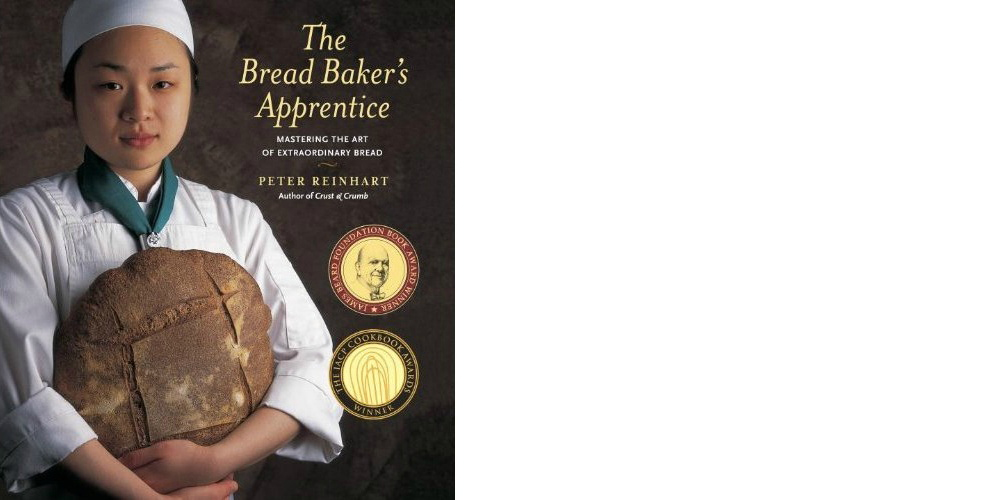
New to bread-making, I’ve been looking for a great guide. I found and fell in love with Peter Reinhart’s book. It has beautiful photographs, and has motivated me to experiment. I’m now one-third of the way through baking every formula in the book. His explanations are very clear. He includes enough theory, which allows me to make my own informed decisions about baking different styles of bread. It is not rocket science, but there are a lot of non-intuitive details he covers well. Needless to say, all this teaching has elevated the quality of my own breads. He also provides detailed recipes for each type of bread he describes, so those who are uninterested in the fundamentals can still bake quite easily. When I got the book, about the only thing my breads had going for them was that they were “homemade.” Now I like my breads just as much or more than the expensive artisan-style breads I buy at my local bakeries.
Some masters are great at craft, and some at teaching, and every once in a while a person like Peter Reinhart comes along who is grand master of both. This book is considered the best all around guide to making fancy and rustic artisan breads; some would say for making any bread, period. Grounded in theory and practice, it is superb teaching.
- Reinhart, Peter. 2001. The Bread Baker’s Apprentice. Berkeley, CA: Ten Speed Press.
- 304 pages
- $20
- Available from Amazon
It is easy to see the subtle difference in color and texture of various flours when they are placed side by side. These are, from left to right, cornmeal, semolina flour (coarse durum), fancy durum, dark rye, white rye, bleached cake flour, unbleached pastry flour, unbleached bread flour, clear flour, and whole-wheat flour.
For perspective, here are the twelve stages in order:
1. Mise En Place (“everything in its place” is the organizing principle)
2. Mixing (in which three important requirements must be met)
3. Primary Fermentation (also called bulk fermentation, in which most of the flavor is determined)
4. Punching Down (also called de-gassing, in which the dough begins to enter its secondary fermentation and individuation)
5. Dividing (in which pieces are weighed or scaled, while continuing to ferment)
6. Rounding (in which the pieces are given an interim shaping prior to their final shape)
7. Benching (also called resting, or intermediate proofing, during which time the gluten relaxes)
8. Shaping and Panning (in which the dough is given its final shape prior to baking)
9. Proofing (also called secondary or final fermentation, in which the dough is leavened to its appropriate baking size)
10. Baking (which may also include scoring the dough and steaming, but in which three vital oven actions must occur)
11. Cooling (which is really an extension of baking but must occur before cutting into the bread)
12. Storing and Eating (in production baking it’s primarily storing, but home baking usually emphasizes, ahem, eating)
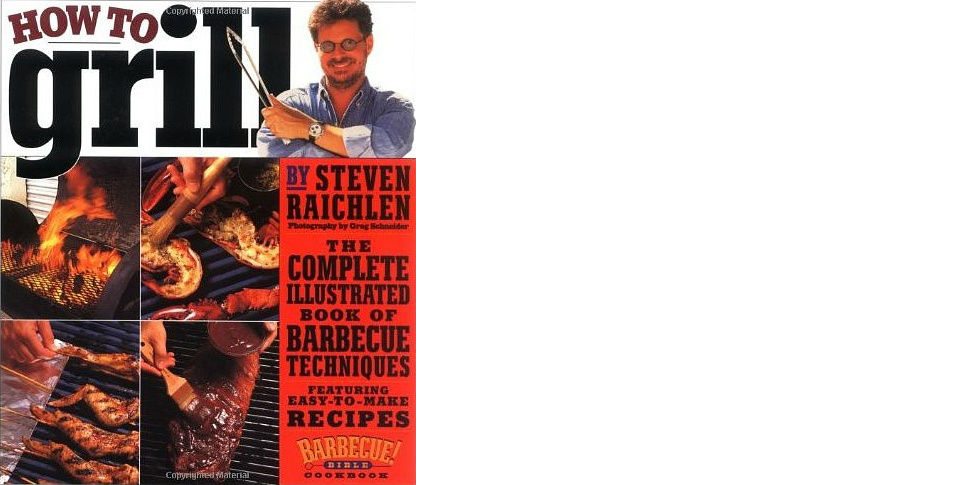
It’s a goofy cliche to say outdoor cooking stirs in men some sort of cellular caveman memory about fire and roasting Mastodon shanks or whatever. But given how firmly the obsession has taken hold of me, there may be something there. I grill at least three times a week, from as early in the spring as possible until I have to start scraping ice just to get cooking. People kept telling me I had to get Steven Raichlen’s How To Grill, so to kick off this year’s grilling season, I bought it. Now I know why people rave. It’s not only the best grilling book I’ve seen, but it’s probably one of the best cookbooks in print. Beautifully designed with great recipes, step-by-step photos and useful marginalia. Warning: Raichlen puts butter or oil on everything, even steak. Beyond meat, there are lots of recipes for grilled veggies and even grilled deserts.
From reading the Amazon reviews it appears this book has turned many men into chefs. They started out grilling and ended up cooking.
- Raichlen, Steven. 2001. How to Grill. New York: Workman Publishing Company, Inc.
- 498 pages
- $12
- Available from Amazon
The pros use the poke test to gauge the desired degree of doness: A quick poke of the meat with your finger will tell you whether it’s rare, medium, or (heaven forbid) well-done. Use the following guide to help you, but remember: A steak will continue cooking even after it comes of the grill.
*
“Bizarre” and “outrageous” aren’t necessarily words you expect to find in a cookbook. But how else would you describe roasting a chicken in a vertical position over an open beer can? I first encountered the method at the Memphis in May Barbecue Festival and described it in The Barbecue! Bible. Since then, I’ve prepared beer-can chicken hundreds of times, and each time this astounding technique produces an exquisite bird. The fact is, the upright position helps drain off the fat, and crisp the skin, while the beer in the can steams and flavors the bird from the inside. Needless to say, the sight of a roasted chicken standing erect on an upright can of beer will astound your guests.
Veganomicon is the best vegan (no meat or dairy) cookbook out there. Its reputation is based on the quantity and variety of its recipes, and the complexity and deliciousness of the resulting dishes. There are more than 250 recipes, presented with wit and lighthearted punk-rock irreverence, as well unpretentious and helpful instructions. These vegan dishes don’t only try to mimic meat-based meals; they are just good food. Our household doesn’t adhere to a vegan diet, yet we’ve found some of these recipes great eye-openers as to how tasty and accessible homemade vegan food can be.
- Moskowitz, Isa Chandra and Terry Hope Romero. 2007. Veganomicon. Cambridge, MA: De Capo Press.
- 336 pages
- $18
- Available from Amazon
We try not to play favorites, but this is one of our babies and a recipe that we are sure will take over food blogs worldwide. A combination of chickpeas and vital wheat gluten formed into savory cutlets, it’s perfect for when you want something “meaty” buy don’t want to go to the trouble of making seitan. We serve these cutlets in myriad ways, packed into sandwiches or smothered in mustard sauce, with a side of mashed potatoes and roasted asparagus. It’s vegan food that you can eat with a steak knife and, best of all, it is fast and easy. You’ll probably want to double the recipe if you’re serving it to guests.
1 cup cooked chickpeas
2 tablespoons olive oil
½ cup vital wheat gluten
½ cup plain bread crumbs
¼ cup vegetable broth or water
2 tablespoons soy sauce
2 cloves garlic, pressed or grated with a microplane grater
½ teaspoon lemon zest
½ teaspoon dried thyme
½ teaspoon Hungarian paprika
¼ teaspoon dried rubbed sage
Olive oil for pan frying
This is a conglomeration of a few recipes from the cookbook that also would make great use of leftover Beanballs (page 189). We throw in a handful of spinach just for posterity; you need not be so healthy if you don’t feel like it. Also, if you don’t want to make the Pine Nut Cream (page 164) and just want to use some soy cheese, we won’t judge you. These would be perfect for a Super Bowl party, or since you are a vegan and hate football, a Nobel Prize party. Ooh, we can’t wait to see who wins for physics this year!
1 recipe Beanballs (page 189)
1 recipe (4 cups) Marinara Sauce, or any of the variations (page 205)
1 recipe Pine Nut cream (page 164)
4 hoagie rolls, split open
2 cups fresh spinach leaves, well washed
*
Tip: To toast sesame seeds: Preheat a small pan over medium-low heat. Pour in the sesame seeds and toast them, stirring often, for about 3 minutes. Once they are browned, immediately remove them from the pan to prevent burning.
*
Tip: This is our favorite way to prep collards: To get rid of the tough stem without having to sit there cutting it, you can actually easily tear the leaves from the stem with your hands. Fill the sink with water, pull off the leaves, rip them into large pieces (collards are tough, they can take it) and put the leaves into the water to rinse them. No need to drain, just give them a shake before adding to the pan.
When I went vegan, I was 14 years-old (14 years later, I still am). At the time, my parents made me sell them on the idea of maintaining my health sans animal products. At first the task seemed incredibly daunting. Once I found Simply Vegan, I had all the answers.
This book is perfect for beginning vegans because it has specific sections on how to be a healthy vegan, as opposed to a “Fritos and Sprite” vegan. The text goes into various sources of proteins and minerals, and includes ready-to-go weekly shopping lists and daily meal lists. If you’re getting into veganism, you can do it safely and intelligently with a minimal amount of work; just buy the stuff on the shopping list and cook it.
I won’t say the recipes in this book are the best ever. They certainly can’t hold a candle to much of Veganomicon. But if you know your way around a spice rack, they’re pretty good. Either way, there’s no better book I’ve found which covers the nutritive bases and really can set a new vegan on the right path to whole health. 14 years later, I’m still vegan and my folks are mostly vegan as well.
- Wasserman, Debra and Reed Mangels. 2006. Simply Vegan: Quick Vegetarian Meals, Fourth Edition. Baltimore, MD: Vegetarian Resource Group.
- 224 pages
- $11
- Available from Amazon
Generally, vegan diets can be low in fat if they emphasize grains, legumes, fruits, and vegetables. Some foods vegans eat such as oils, margarine, nuts, nut butters, tofu, tahini, avocado, and coconut are high in fat. These foods should not be the center of one’s diet but should be used sparingly. For example, tofu is high in fat. If you ate a pound of tofu, you would eat about 22 grams of fat. Eating a smaller amount of tofu (4 ounces) and serving it over rice with vegetables could provide the same number of calories and less fat.
*
Calcium, needed for strong bones, is found in dark green leafy vegetables, tofu made with calcium sulfate, calcium-fortified soy milk and orange juice, and many other foods commonly eaten by vegans. Although lower animal protein intake may reduce calcium losses, there is currently not enough evidence to suggest that vegans have lower calcium needs. Vegans should eat foods that are high in calcium and/or use a calcium supplement.
Veterans of wild mushrooming quickly graduate to author David Arora’s masterpiece, Mushrooms Demystified, which is the undisputed bible of mushroom knowledge in North America. Where All That the Rain Promises and More... is breezy and succinct, Demystified is encyclopedic and exhaustive. You take Rains out to the mushrooms in the woods; you bring the mysterious ones back to the heavy Demystifed tome at your kitchen table.
- Arora, David. 1986. Mushrooms Demystified. Berkeley, CA: Ten Speed Press.
- 1020 pages
- $26
- Available from Amazon
Boletus appendiculatur (Butter Bolete); pores normally stain blue when bruised.
*
LBM’s: Little Brown Mushrooms
The cap is brown, the stem a shade browner, the gills browner still. This can be said of nearly one half of all the mushrooms you find. On even the most casual jaunt through the woods, you’ll find dozens and dozens of Little Brown Mushrooms sprouting at your feet, and very likely under them as well. The fact is, Little Brown Mushrooms (“LBM’s”) are so overwhelmingly abundant and uncompromisingly undistinguished that it is more than just futile for the beginner to attempt to identify them—it is downright foolish.
Elizabeth Yarnell has developed an easy, tasty, and fast method of one-pot cooking she calls “infusion cooking.” More or less, it’s the opposite of slow-cooker cooking. The ingredients are layered in a two-quart cast-iron Dutch oven, which is covered and placed in a 450°F oven for 45 minutes. I’ve found that I can assemble one of Yarnell’s meals in the time it takes the oven to heat. That makes two servings: one for a couple or, in my case, one for lunch and dinner. Although the recipes in Glorious One-Pot Meals need a bit of spicing up, after making a couple, you get the idea and improvisation is easy.
Yarnell recommends an enameled cast-iron Dutch oven. Although it’s not enameled, I’ve found the Texsport two-quart Dutch oven ($25 at Amazon) to be my favorite. It’s pre-seasoned and easy to clean and use. Most of the two-quart Dutch ovens are squat and short. The Texsport is narrower and taller, which seems to work best for this method of cooking (I’ve tried several different ovens). Plus, when it’s filled to the brim, the Texsport is actually 2.5 quarts. The extra room is useful if you’re including leafy greens. If you have your heart set on using an enameled pot, I recommend the Staub 2.25-quart round cocotte ($100 at Amazon) instead of the Le Creuset dutch oven ($140), because the Staub is higher quality and better made.
- Yarnell, Elizabeth. 2009. Glorious One-Pot Meals. New York: Broadway Books.
- 240 pages
- $25
- Available from Amazon
To give you an idea, here’s a recipe I came up with, layer by layer, starting with the bottom and moving up:
¼ large onion, chopped coarsely
½ c uncooked converted rice ( this makes 2 servings: for some reason in the book Yarnell consistently cooks a full cup—4 servings—of rice: too much for me)
2 Tbsp vinegar over the rice (sherry, rice, balsamic, Chinese black, whatever)
8 oz protein (I’ve successfully used lamb, chicken breast, tempeh, and a variety of fish—I cut the protein into bite-size pieces)
salt, pepper, crushed red pepper (just a little to provide some body), perhaps some herbs—with fish I usually squeeze half a lime over them and add some capers to this layer
4 mushrooms, sliced
½ bell pepper (green, red, or yellow), cut into squares
1 yellow crookneck squash, coarsely chopped
½ bulb fennel, cored and sliced
Fill the remaining space with your choice of: green beans, broccoli, red chard, spinach, or any other leafy greens.
2 Tbsp Bragg’s vinaigrette
2 Tbsp sherry
1 Tbsp Worcestershire sauce (I use homemade)
1 tsp Dijon mustard
Whisk together in a small bowl, then pour over the top.
Cover and cook for 45 minutes in 450°F oven. Serves two.
You will discover through experience the amount of liquid you’ll need with different vegetables. With bok choy, for example, no additional liquid is needed. For the starch layer, I’ve also used: baby potatoes, quinoa, egg noodles, pasta, and the like. This method is terrific and generally will up your vegetable consumption without raising calories.

Yogurt, bread, beer, kimchi, wine, cheese, miso, kraut, and vinegar are among the many foods produced with the aid of microorganisms. Those are living beasties of a type that we ordinarily try to remove from what we eat. This cookbook is full of fermentation recipes. It presents a unified theory of “live-culture foods,” a way of connecting their different methods in order to understand why fermentation is a Good Thing, and why there should be more of it.
Fermentation is fairly easy to do. It can self-correct many beginner’s errors. It is definitely a slow-food process, but at the same time, a low-effort process since the bugs do most of the work. The recipes here are starter ones, broad in scope, easy to do, just to get you going. The appendix contains a good roundup of sources for a large variety of live cultures. You can find deeper more complex recipes in specific books, but here in one slim volume is a great introduction to how to ferment. At least once, you should make your own yogurt, bread, beer, kimchi, wine, cheese, miso, kraut, and vinegar. Find what you do well and make more of it.
More importantly, ferment something new.
- Katz, Sandor Ellix. 2003. Wild Fermentation. White River Junction, VT: Chelsea Green Publishing Company.
- 200 pages
- $17
- Available from Amazon
By eating a variety of live fermented foods, you promote diversity among microbial cultures in your body.
*
Timeframe: 1 to 4 weeks (or more)
Special Equipment:
Ceramic crock or food-grade plastic bucket, 1-gallon/4-liter capacity or greater
Plate that fits inside crock or bucket
1-gallon/4-liter jug filled with water (or a scrubbed and boiled rock)
Cloth cover (such as a pillowcase or towel)
Ingredients (for 1 gallon/4 liters):
5 pounds/2 kilograms cabbage
3 tablespoons/45 milliliters sea salt
*
I know of no food that is without some tradition of fermentation.
*
Hamid Dirar has identified eighty distinct fermentation processes in The Indigenous Fermented Food of the Sudan, a book describing an incredible array of ferments that result in consumption of every bit of animal flesh and bone.
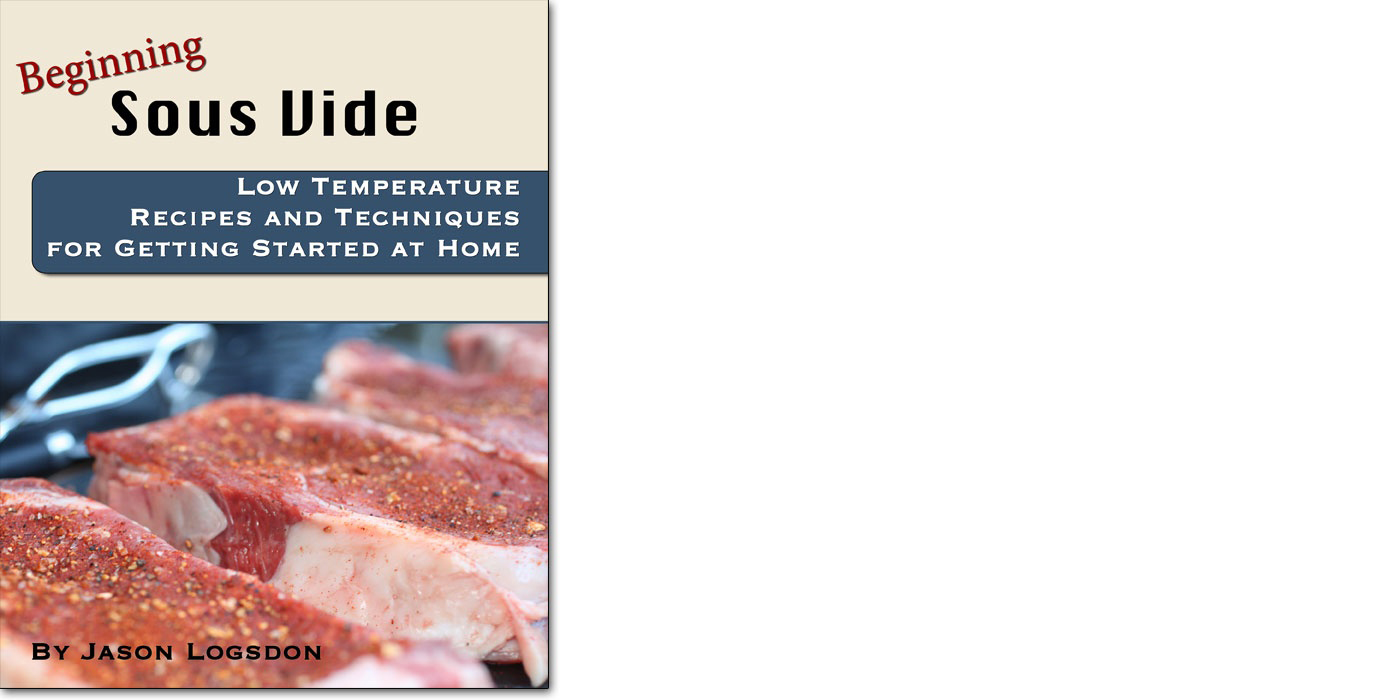
There’s a new way of cooking. When food is simmered in a sealed pouch at low temperatures for long periods of time the food flavors are surprisingly enhanced. Meats in particular benefit from this type of preparation, called sous vide in French. I found fish and veggies made by this method to be amazingly tasty, with a unique texture and bursting with savories. Meats are stunningly moist without being overdone or underdone. This method is neither roasting, stewing, or searing. It’s a whole new method of cooking that brings a new set of flavors, textures, and treats.
But lower cooking temperatures require more exactitude, and the food pouches need to have their air removed to ensure even cooking, so the equipment to cook this way has been expensive and confined to fancy restaurants. Naturally, amateurs quickly figured out home versions, while appliance makers started selling cheaper residential gadgets.
But know-how was still in short supply. I found this cookbook the best one to start out with. Low temperature or souz vide cooking requires a whole new set of recipes. Cooking times are so different you need charts to determine duration and temperature, which this book provides. This guide explains the principles extremely well and they assume you’ll be using homemade or home grade equipment. Basically what you need is a water bath that can maintain its temperature to within a few degrees over several hours or more. Dedicated units have bubblers and thermostats to keep very even water temperatures. And an ordinary FoodSaver freezer vacuum unit will produce airless watertight pouches of food.
However there is an extremely easy and cheap way to try out sous vide cooking for the first time without buying any equipment at all. You are limited in what you can do, but you’ll get an idea of what the process can do. All you need is a cooler, a kitchen thermometer, and a vacuum packed hunk of food from the grocery store.
As an example, we took some frozen vacuum packed fish from Trader Joe’s. First you defrost it.
Then you fill up the cooler halfway or so with water heated on the stove to the appropriate low temperature (found in the book or online). In the case of fish it’s probably not much above the maximum temperature coming out of your water heater. Let the food steep in the water for the required time. (It can be up to hours for meat.) You may need to add some hot water if your thermometer shows the water cooling. Unwrap the finished fish and add sauce.
If you like the results you can build your own bath, or purchase a home unit, and use this book to guide your exploration.
- Logsdon, Jason. 2010. Beginning Sous Vide. Seattle, WA: CreateSpace.
- 201 pages
- $24
- Available from Amazon
The basic concept of sous vide cooking is that food should be cooked at the temperature it will be served at. For instance, if you are cooking a steak to medium rare, you want to serve it at 131°F.
With traditional cooking methods you would normally cook it on a hot grill or oven at around 400°F-500°F and pull it off at the right moment when the middle has reached 131°F. This results in a bulls eye effect of burnt meat on the outside turning to medium rare in the middle. This steak cooked sous vide would be cooked at 131°F for several hours.
This will result in the entire piece of meat being a perfectly cooked medium rare. The steak would then usually be quickly seared at a high heat to add the flavorful, browned crust to it.
*
A great low-cost method of sealing your food is food-grade ziploc bags. They have a few drawbacks but work great for short cooked foods, especially if you are just getting started with sous vide cooking and do not want to spend any up-front money. In most cases sealing your foods with ziploc bags is also a lot easier than using a vacuum sealer.
*
The main advantage is price. If you already have a cooler and ziploc bags then it is basically free to try.
Another advantage is that the water coming out of many home faucets is around 131°F-139°F, meaning it is the perfect temperature to cook steak in. If your faucet is in that range it just means you rink up the tap water, fill the cooler, and throw in the steak. It can be very simple.
*
Some of the most impressive results of sous vide are created with tough cuts of beef. Sous vide allows you to do things that traditional methods are unable to accomplish, such as cooking short ribs medium-rare but still tenderizing them, or creating fall-apart medium-rare roasts.
This is accomplished because cooking tough cuts of beef with sous vide allows you to break down and tenderize the meat without cooking it above medium-rare and drying it out. Once temperatures in beef go above 140°F the meat begins to dry out and become more bland. However, they also start to tenderize more quickly above this temperature which is why tough roasts and braises are done for hour at high temperatures. Using sous vide, you can hold the meat below 140°F for a long enough time for the tenderizing process to run its course.
*
Most tough cuts of beef are cooked sous vide for between 1 and 2 days. However, for some more tender beef roasts shorter cooking times of 4 to 8 hours will be enough time to tenderize the meat fully.

